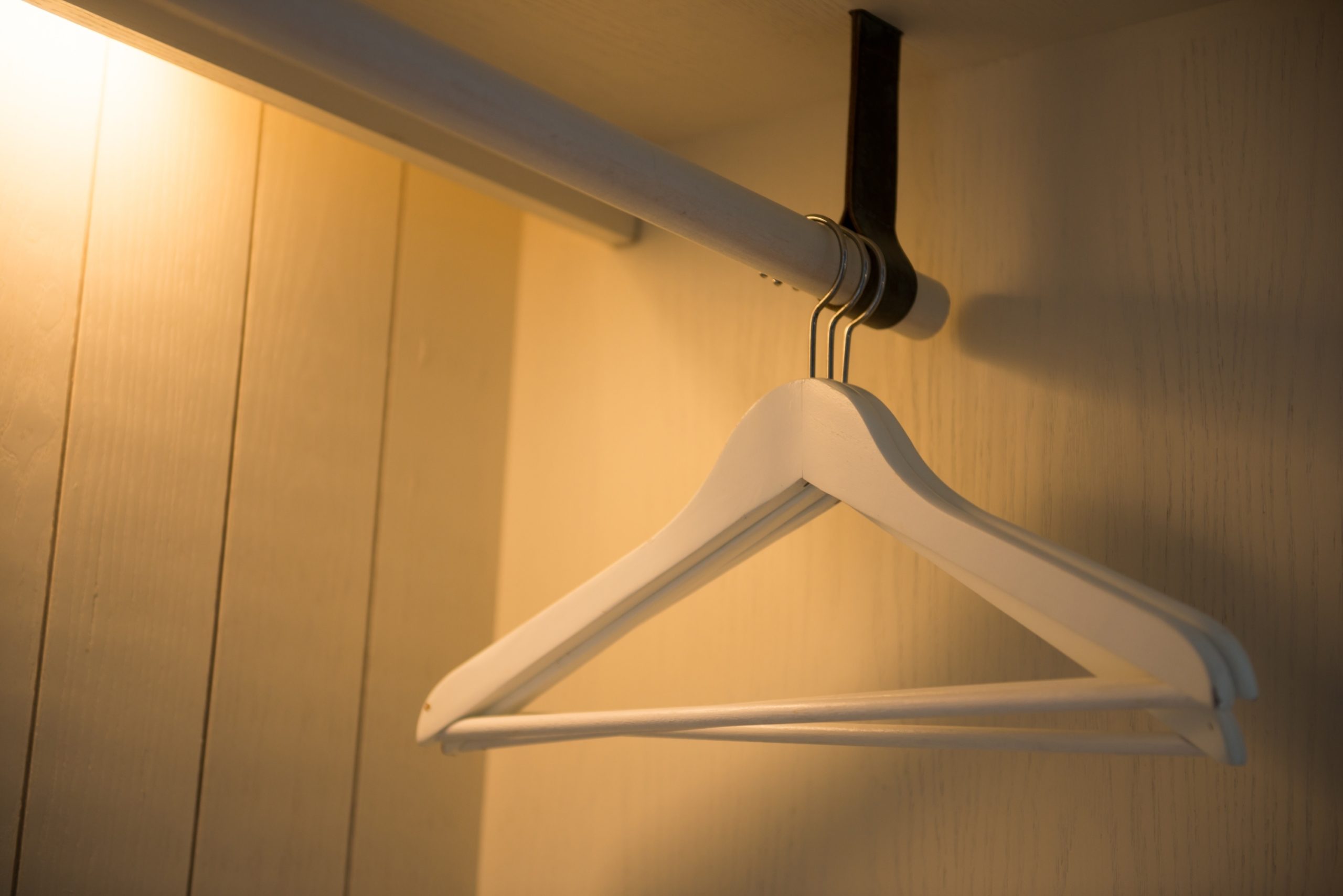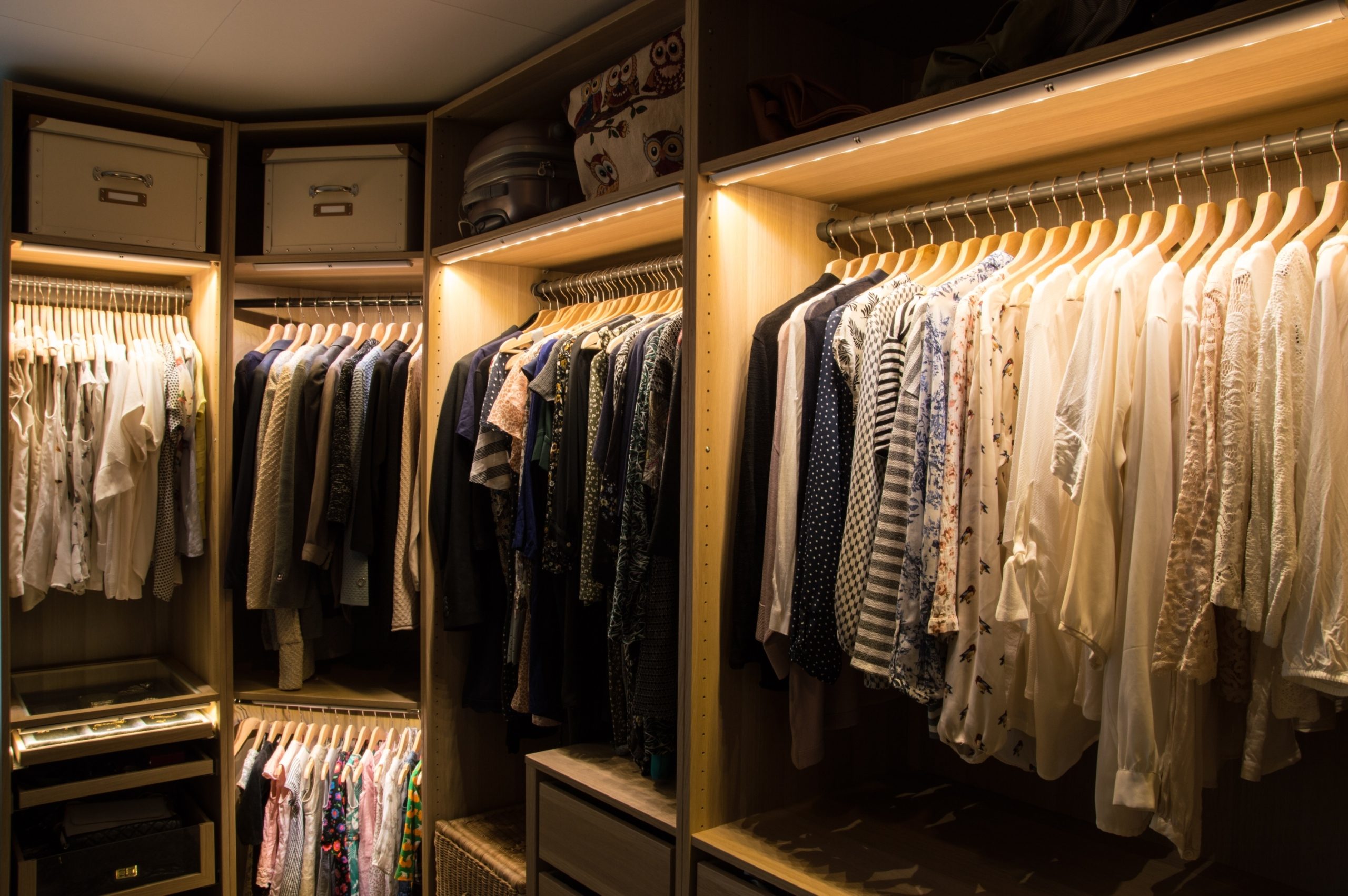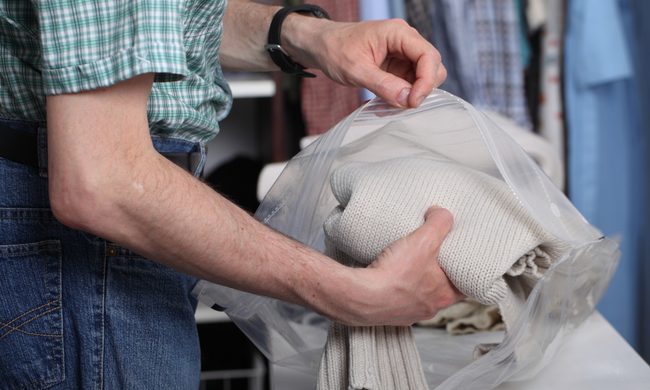When your closet has little to no sufficient lighting, it’s time to develop some stunning solutions to bring some life and vibrance into your space.
Closet lighting can be tricky. There are so many dark corners, deep drawers, and eerie shadows cast by shelving and swaths of fabric. Finding the right balance to light your wardrobe efficiently is a challenge that is often left untackled.
What to look for in closet light fixtures
Variety is the name of the game when it comes to lighting your closet. A single overhead light just won’t do the trick on its own. The best way to light a closet is by having a diverse lighting solution that spans the entirety of your wardrobe.
Battery vs. plug-in lights
There are two types of lighting solutions for closets that don’t require electrical work — those that plug into an outlet and those that are battery operated.
Battery
Battery-operated lights are some of the most common when it comes to self-installing, budget-saving lighting solutions. Puck lights are an excellent example of a battery-operated light source.
Puck lights are small circular lights that attach with adhesive to the walls and ceilings of your closet. While they have a similar appearance to recess lighting, these lights can be placed anywhere you’d like. To turn them on or off, you simply press the center of the light. They activate like battery-powered buttons to light up your space.
Plug in
Plug-in lights are a great source of lighting that only require a nearby outlet to be used. If you have an outlet in your closet already, this can be a great option. They don’t require the replacement of batteries, which eliminates the need for much maintenance.
Tape lights are a good example of plug-in lighting solutions. While some tape lights can be powered by batteries, others are plugged into a nearby outlet and controlled by the use of a remote or turned on with your light switch.
Depending on which you prefer, battery and plug-in lighting solutions can be a cost-effective way to add more lighting to your closet space without breaking the bank.
Lighting that requires little maintenance
Under-shelf lighting
Under-shelf lighting does not have to be reserved for the kitchen. You can purchase puck lights or light bars to attach to the bottom of your shelves to illuminate the space beneath.
Lightbars are long bars of light that can attach via nails or screws or with adhesive tape to the bottom of your shelf. While each lightbar is different, some of the best varieties include motion sensors that detect movement, lighting up only when you walk in front of them. This is a great way to save energy and relieves the need to fumble around in the dark for a light switch or a button.
Undershelf lighting is a great way to light up space beneath so that everything can be seen. Light fixtures can also be placed above your clothing rack to illuminate your hanging items, as well.
Drawer lighting
If your closet has several drawers, you might consider inserting motion lights or puck lights into your drawers to help revitalize the space.
Drawers can be dark and cluttered, but with some simple tape lights or puck lights, you can illuminate the inside of your drawers to make your items more visible.
A simple tip is to wrap tape lights around the top edge of your drawer, where items won’t block the illumination. Or, attach a small puck light to the top of the drawer to turn on upon opening. Be sure not to place lights on the bottom of the drawer as they will be covered up by your fabrics, which will prevent the light from brightening up the space.
Trim lighting
A favorite for many closet creatives is to place tape lights around your closet’s upper and lower trim to brighten the space.
Trim lights allow your space to be illuminated by a soft glow. This creates a sense of coziness and vibrancy in your area. You can also outline shelving or doors with the use of tape lights to make the space brighter.
Another trick you can easily implement into your closet is the use of backlights. Place tape lights, lightbars, or puck lights at the back of your closet and place foggy glass over them. Remote-controlled lighting works best for this DIY project. When you flip the lights on, the back of your closet space is illuminated, shining its soft glow on your items in front.
What to keep in mind for hall and coat closets
Smaller closets, coat closets, and hall closets do not always have a lot of wiggle room for amazing lighting solutions. However, you should not toss in the towel just yet!
Lighting smaller closets often allows them to feel and appear bigger than they are. Use motion-sensored lightbars at the top of your closet instead of an ordinary bulb. This will save space and make the closet look neater.
If you have storage or shelving in your closet, outline the boxes with tape lights or string the lights across the back to illuminate the space from behind, similar to the lightbox DIY project mentioned above.





